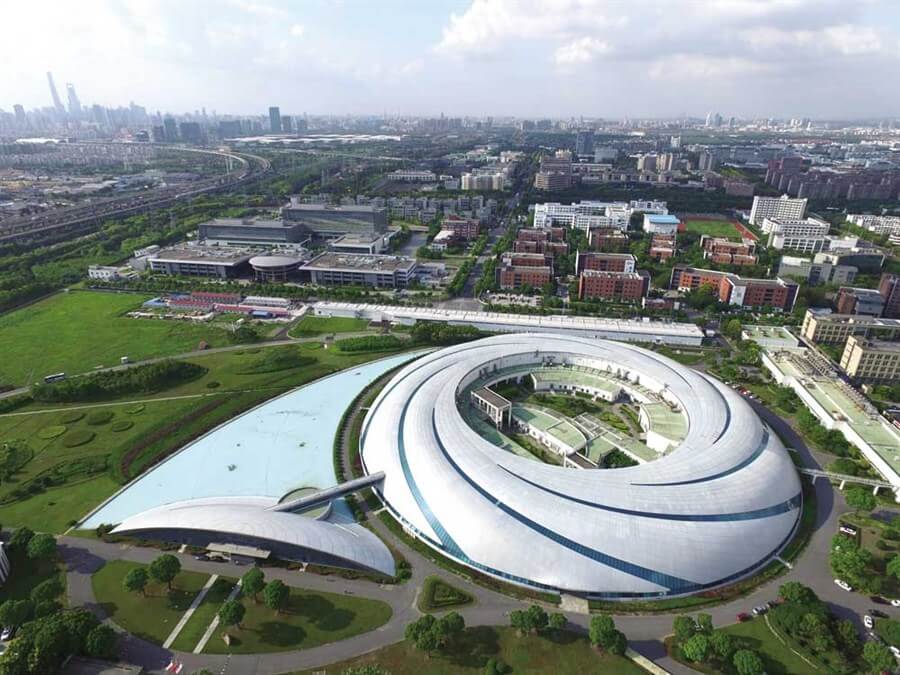
A general view of Shanghai’s financial district of Pudong. Alongside Beijing, Shanghai makes strong debut in StartUp Genome’s Global Startup Ecosystem 2017 Report. Source: Reuters
Shanghai’s Zhangjiang science and tech center gets 2020 deadline
SHANGHAI’S planned Science and Technology Center will have its basic framework set up by 2020 and core functions by 2030, as the city looks to develop enough infrastructure to attract more research and development investment, and talent.
According to the city’s mayor, Ying Yang, after nearly a year of studying and researching its feasibility, the city would be beginning plans to launch the construction of the Zhangjiang comprehensive national science center, as reported by Yicai.com.
The building is not only part of the city’s vision for itself as a hub of science and technology research, but also as part of a wider, national move instigated by President Xi Jinping.
Xi announced at the 19th Communist Party Congress that the country would be looking to transform itself into a “strong country” with more use of advanced technologies including Internet, big data, and artificial intelligence. This follows comments from last year from the President indicating that innovation platforms and national labs will be engaged with independent and academic entities in developing these platforms.

The Zhangjiang Science and Technology Center will play a central role in bringing Shanghai to the status of Silicon Valley. Source: Zhangjiang Science and Technology Center Corp
The country’s science and technology minister said that the government would be further investing in scientific infrastructures, according to a September statement by the Chinese Academy of the Sciences.
The Zhangjiang Comprehensive National Science Center is envisioned to be a 94sq km district that will aim to attract both private entities and existing research institutions into a single location in order to boost the city’s innovation capacity. Known as a commercial and tourist capital, Shanghai has played second fiddle to other cities in China such as Shenzhen and Guangzhou in terms of technology capacity.
Ying Yang said the future of Shanghai was dependent on the development of the city, and that the hope is that the Zhangjiang center will be able to make an immediate impact, while enhancing the city’s concentration on the digital economy. The center will be the “Silicon Valley” of China, and is estimated to create around 880,000 jobs, according to Shanghai Daily.
The center was unveiled in late September this year, and officials said that its goal would be primarily to promote the basic sciences.
The center will reportedly include world-class facilities such as devices for the study of photonics, and other technologies. Groups of some of researchers from the world’s top scientific research institutions and various innovation teams will also likely be there, including Wang Xi, the director of the lab. He also runs the Shanghai Advanced Research Institute.

The center will bring together and integrate many existing institutions as it looks to centralize innovation. Source: Zhangjiang Science and Technology Science Center
Wang said the center will have a particular focus on “[interdisciplanaries] between life science and information technology”, such as photonics (the study of the physical properties of light), life sciences, and brain-inspired intelligence tech.
The center will also act as a central node for the scientific community in Shanghai. Several national science facilities will be located in Zhangjiang and integrated into the fabric of the lab in order to create a more productive and connected environment. This includes the Shanghai Synchrotron Radiation Facility and the Chinese Academy of Sciences. The latter was a partner with Shanghai’s municipal government in the Zhangjiang construction project.
The Shanghai Engineering Center for Microsatellites was also revealed to be one of the institutes integrated into the Zhangjiang center. The institute was launched last month, and will contribute to China’s space ambitions. The center has helped develop some of China’s most significant breakthroughs in satellite technologies, including the world’s first quantum communication satellite and the People’s Republic’s first carbon monoxide monitoring satellites.
The center will also support the development of a support system for foreign investment looking into moving into Shanghai. This will be aided by the construction of the Global Impact Center.
READ MORE
- Strategies for Democratizing GenAI
- The criticality of endpoint management in cybersecurity and operations
- Ethical AI: The renewed importance of safeguarding data and customer privacy in Generative AI applications
- How Japan balances AI-driven opportunities with cybersecurity needs
- Deploying SASE: Benchmarking your approach






